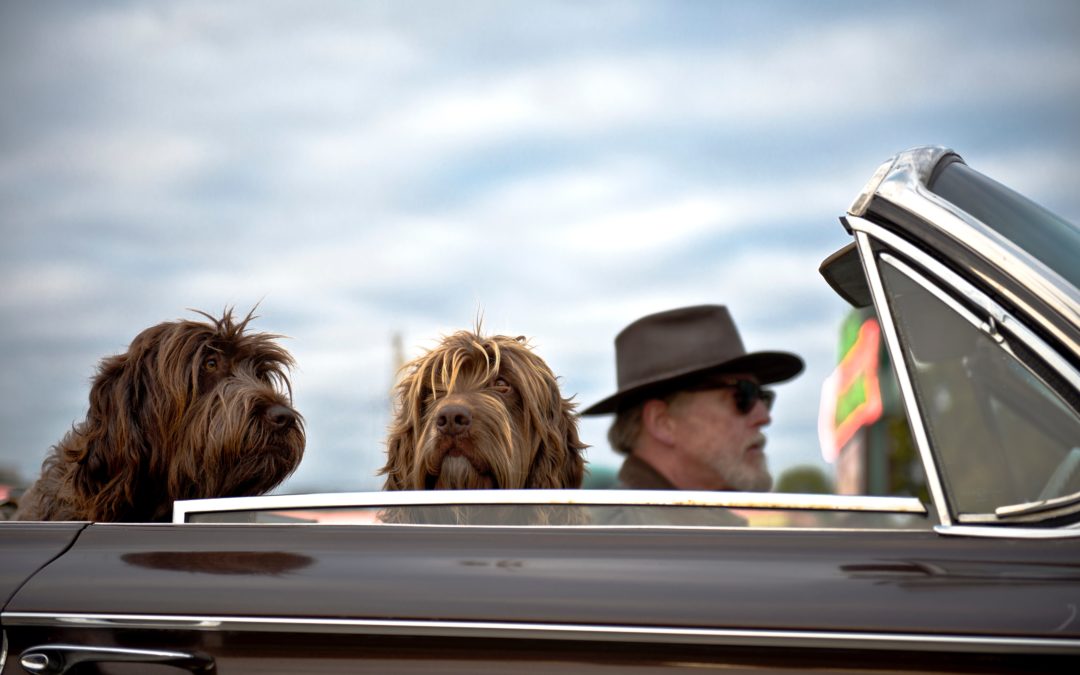Driving with your Dog
It goes without saying that we all love our canine friends, and many of us can’t wait to bring them with us on car rides. However, it is important to stay well-informed on the best ways to keep both yourself and your dog safe while you drive.
From the fit of your dog’s harness to the containment methods you use in the car, there are a number of key factors to consider when getting ready for your next tandem drive. Take a look at these 7 great tips for driving with your dog in order to prepare yourself for a future of safe car rides with your four-legged companion!
1. Stick with the back seat
No matter how much you enjoy your dog’s company and love having them within reach, the back seat is always the safest place for them. When your dog rides in the back seat, there’s far less risk of them falling near the gas and brake pedals or interfering with your ability to steer safely. Additionally, keeping your dog in the front seat may interfere with your line of sight and cause you to pay less attention to the road.
The back seat provides more room than the front seat for your canine friend to fidget or sprawl as they like without getting in your way, and increases their chances of getting comfortable for longer rides as well.
2. Always secure your dog’s harness
Never take your dog on a car ride without putting on their harness first! Harnesses provide a safe, easy handle to grab onto in case your pet tries to squirm where they don’t belong, and they’re easier to clip leashes to than collars are.
A harness is also far safer for your dog in case of an accident since it won’t put dangerous levels of strain on their neck if it gets stuck on anything. Make sure that your dog’s harness is fitted to their proper size and that it’s adjusted according to the instructions.
3. Keep things extra secure with a carrier or barrier
If you plan to take frequent drives or road trips with your dog, then you might want to purchase a pet carrier or crate that can be strapped into your vehicle. Carriers provide a number of advantages alongside improved safety, including an extra layer of containment for dogs who tend to leap for freedom as soon as you open the door!
If your pooch is too large for car-friendly pet carriers, then you might want to install a pet barrier in your vehicle instead. These function similarly to the safety barriers used in police cars, and give your pet free roam of the back seat while eliminating any risk of them jumping up front to ride shotgun.
4. Keep the windows rolled up
It might be tempting to let your dog swing their head out the window and let their jowls flap in the wind, but they’ll be better off if you don’t. Dust and bugs can get blown into your dog’s eyes and ears when they face the wind, causing all kinds of irritation or even infections.
Larger pieces of debris could pose an even greater threat of injury if they collide with your distracted canine at high driving speeds.
5. Fasten your seat belts!
Yes, that actually goes for both you and your pooch. There are a number of canine seat belts available on the market that are especially handy for dogs on the larger side. When you don’t want to deal with the hassle of a large dog crate or pet barrier, then simply securing them with a canine seatbelt will usually do the trick.
Canine seatbelts generally hook onto your dog’s harness and do a great job at keeping them from excitedly leaping for the door as soon as it’s opened.
6. Start small
While having the appropriate gear on hand is certainly helpful, the attitude that you and your dog share towards car rides is extremely important as well when it comes to safety and driving preparedness.
Puppies obviously aren’t born with an innate understanding of vehicle rides, and an adjustment period will be needed. Your best bet is to ease them in with a series of smaller car rides before taking any long drives.
7. Never leave your dog closed up in your vehicle
Not only can this create a very real threat of dangerous temperature exposure for your pet, but it can cause anxiety issues for them as well. You don’t want to leave your dog unsupervised in your vehicle to cause messes or get otherwise destructive out of boredom, either.
Anxious or restless pets are more likely to engage in distracting behaviors while you’re driving, so take regular breaks to let your pet stretch their legs and water some bushes! If you’re stepping out of your vehicle for a break, then they should be right there with you.
Remember:
Refer back to these 7 helpful tips for driving with your dog in order to make sure that your car ride is safe and comfortable for everyone involved.
Always make sure your dog has their harness on before you get in the car, and make use of safety restraints such as pet barriers or canine seatbelts if you can.
Have your dog hang out in the back seat rather than the front, ease them in with short, enjoyable car rides, and always make sure they’re supervised and safely contained!
Article by Mark Johansson
Check out our other article about traveling with your pet.

